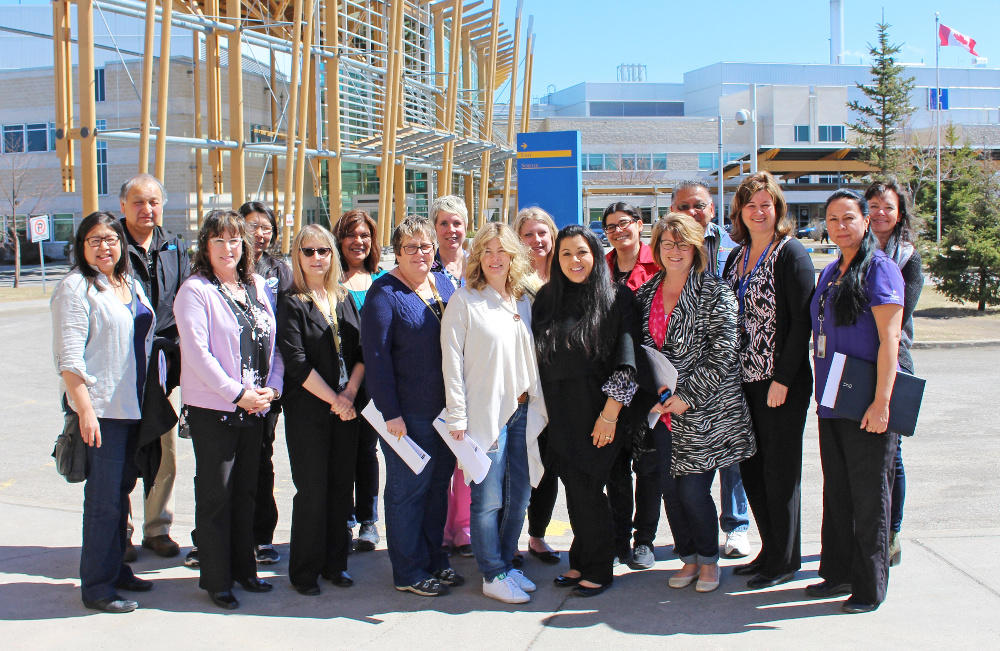Discharge Planning Eases Transition To Home for Indigenous Patients
by Maryanne Matthews
 The Health Sciences Centre’s discharge planning group includes representatives from different departments within the Hospital, the Regional Palliative Care Program, Dilico Anishinabek Family Health, Nishnawbe Aski Nation, Non-Insured Health Benefits, and Wequedong Lodge. Together, they help to ease the transition to home for Indigenous patients and families.
The Health Sciences Centre’s discharge planning group includes representatives from different departments within the Hospital, the Regional Palliative Care Program, Dilico Anishinabek Family Health, Nishnawbe Aski Nation, Non-Insured Health Benefits, and Wequedong Lodge. Together, they help to ease the transition to home for Indigenous patients and families.Discharge plans support patients to transition from hospital to home. They include the steps to be taken and the services that need to be in place to ensure a safe transition home. A discharge plan must be in place before an admitted patient is released from Thunder Bay Regional Health Sciences Centre. This process is different, and often more difficult, for patients returning to remote, northern communities. A new discharge planning group is working to help ease the transition to home for Indigenous patients and families.
The discharge planning group is part of our Hospital’s commitment to provide care that improves self-management, access, experience and transition to home for Indigenous patients. It also helps ensure coordinated follow-up care prior to discharge for patients from remote communities.
“Discharging patients to remote communities is a very complex process with specific considerations, such as Non-insured Health Benefits approvals, funding, geographical and travel limitations, and availability of services in the community,” said Samantha Moir, Manager of Corporate Patient Flow. “The goal of the discharge planning group is to provide the necessary information and resources to health care providers who are involved in discharge planning to make the process as smooth and standardized as possible.”
Our Hospital believes in the power of partnerships. The discharge planning group consists of numerous community partners, all working together to achieve a common goal – to enhance patients’ experiences and outcomes, while helping them to avoid waiting in the hospital any longer than necessary.
The group includes representatives from different departments within our Hospital, the Regional Palliative Care Program, Dilico Anishinabek Family Health, Nishnawbe Aski Nation, Non-Insured Health Benefits, and Wequedong Lodge. Everyone shares their expertise of the special considerations for discharging Indigenous patients to remote communities.
“So far, our focus has been on the development of resources to assist staff to best meet the needs of Indigenous people during their hospital stay and through to discharge to their remote communities,” said Moir. “By making key information available to staff, we are improving discharge planning processes, decreasing length of stay, and improving communication and understanding between our Hospital and community health providers.”
“We need to work together in order to make these transitions easier for both the patient and health care provider,” said Susan Bale, member of the Discharge Planning Group.”Having a verbal dialogue between our Hospital and community care teams are essential in this process”.